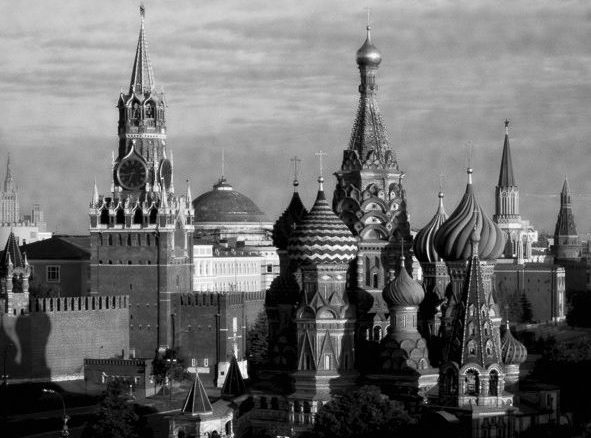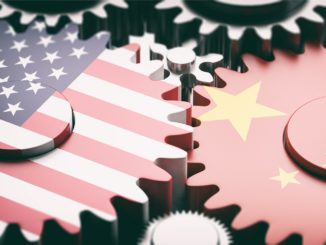
While the supercomputing segments in some countries are based on supplying the world with systems, the business of others is based on diverging from those companies. The nationalistic tinges of supercomputing prowess are often accompanied by homegrown architectures, which is apparent in the most obvious example, the United States. Other countries without a strong, diverse vendor backbone are forced into either investing heavily in one company to represent the architectural push, or they try to carve out a niche wherever possible using foreign-built systems comprised of foreign-made parts. Russia captures this place perfectly. It is a large country, that while economically constrained just now, does have the potential to be an HPC powerhouse. All that is missing is a firm investment in native companies.
Russia currently has seven supercomputers listed on the most recent Top 500 rankings of the world’s most powerful systems. In 2012, there were eight on the list, in 2010, there were eleven, and the years prior to this were roughly the same shares and interestingly, with the same approximate breakdown in Russian vendors versus American companies, most notably Hewlett Packard and IBM with some SGI and other U.S. vendors mixed in throughout the years.
Of the native Russian vendors, only two names appear—and they are same two that emerge in any topic about the state of Russian supercomputing. These are T-Platforms, which fell on hard times after being blacklisted by the U.S. government in 2013 and re-emerged with a fresh emphasis on local business (and consistent denials of any wrongdoing against claims they supplied systems to hostile nations for potential weapons simulations), and the “other” Russian supercomputing vendor, RSC.
The two highest-ranked Russian systems on the Top 500 list (at #36 and #95) are T-Platforms machines, both of which are located at Moscow State University where, incidentally, both co-founders of RSC emerged from before starting the company in 2009. At the time, says RSC CEO, Alexander Moskovsky, the competitive pressures on Russian high performance computing (HPC) vendors to keep pace in terms of price, performance, and perception with U.S. companies as exists today. Further, at the time the pair started the company, which now counts over 50 full time employees (and a large pool of contractors who are “easier to motivate,” Moskovsky says), the investment in supercomputing, particularly from the government, which pushed HPC programs until 2010, was far higher.
It is something of an electronic relic, this site, which was created in 2006 to espouse a brilliant future for supercomputing in Russia via the SKIF program. This was a beneficial effort, both co-founders note, which helped RSC get off the ground and tap the renewed zeal in homegrown supercomputing architectures. As one can see from the news timeline, which ends in 2005, there were significant developments, including successful LINPACK benchmark runs of new systems and various efforts to port a wide range of software codes to meet the capabilities of larger, more powerful parallel computing platforms. When the program hit the end of its life in 2010, however, it meant RSC had to rethink its approach to the Russian high performance computing market—a challenge because of overall national emphasis on spending far more than some undefined lack of interest.
As the company’s co-founder and Chief Operations Officer, Alexey Shmeley, told The Next Platform, there has never been a change in the demand for supercomputing. In fact, it is growing as HPC continues to push over more enterprise borders. The problem is ultimately investment, both on the part of the Russian government and among cash-strapped institutions and business in the country, which are stagnating under current economic conditions. Even still, for the companies and universities that are investing in supercomputing, the emphasis is right in line with what RSC has been delivering—systems that have energy efficiency at the core and are built with commodity parts to keep the overall price of the system low. Like many other smaller HPC vendors that have carved out a niche, RSC is focused on high-density X86 systems with a liquid cooling core. While this is not a fit for all centers, the cost savings and uniqueness over the systems that supercomputing centers are buying from U.S. vendors remains an attractor, says Moskovsky.
Like the many high performance computing system vendors on the planet, it is RSC’s hope that it will be possible to carve out a valuable business innovating on standard architectures, adding new processor generations and accelerators as they emerge (for RSC, only Xeon and Xeon Phi despite the fact that there is interest in Russia for GPUs, as evidenced by the T-Platforms machines), and tweaking power and other factors for cost efficiency. But what is most interesting here is that one of its strongest arguments for a robust business is its uniqueness to the local market. Like T-Platforms, the only other Russian supercomputing competitor, one might expect that Russia would “go local” especially following the highly publicized trouble with the United States government over the T-Platforms blacklisting. However, this is not the case—and neither Moskovsky or his co-founder know why this might be given the relative homogeneity of vendor offerings for standard X86 iron.
As we have noted in the past about countries like Japan and China, which are driven to great lengths to invest in their own native architectures however possible (Japan with its K Computer, for instance, and China, with its Tianhe-2 machine that, due to another blacklist, is being pushed down a unique homegrown DSP road), there is a nationalistic initiative in some countries to keep investments inside borders. In Russia, however, this has yet to be the case—and in fact, the RSC co-founders say—the pressures to keep pace against similar offerings from IBM, Dell, and HP, at least for standard machines, is still growing.
As Russia climbs its way out of its economic troubles, one might expect this to shift, especially if new government investments in HPC are pushed. But so far, there is nothing on the horizon, Moskovsky says, although he does point to how other programs, including the much broader Horizon2020 effort to create next-generation infrastructure, are offering RSC new partnership opportunities outside of Russia. Europe, however, already has its own designated crew of HPC system vendors, including Bull, Eurotech, and many others that might have greater advantage in their home territories.
While RSC is perfectly able to sell into countries like the United States, Moskovsky laughed slightly when asked if any deals for HPC systems to the U.S. might happen, which is answer enough to an admittedly ridiculous question. A more suitable question, and one that was left without an answer is: If this is the case in Russia, what is the value in having two distinct Russian HPC vendors if the main differentiation is around liquid cooling and the availability of GPUs?
Russia, like many other countries in various depths of economic woes, is first to see the potential of an economic uplift from supercomputing, but as Moskovsky says, without investment, all the demand in the world is not useful.





Be the first to comment